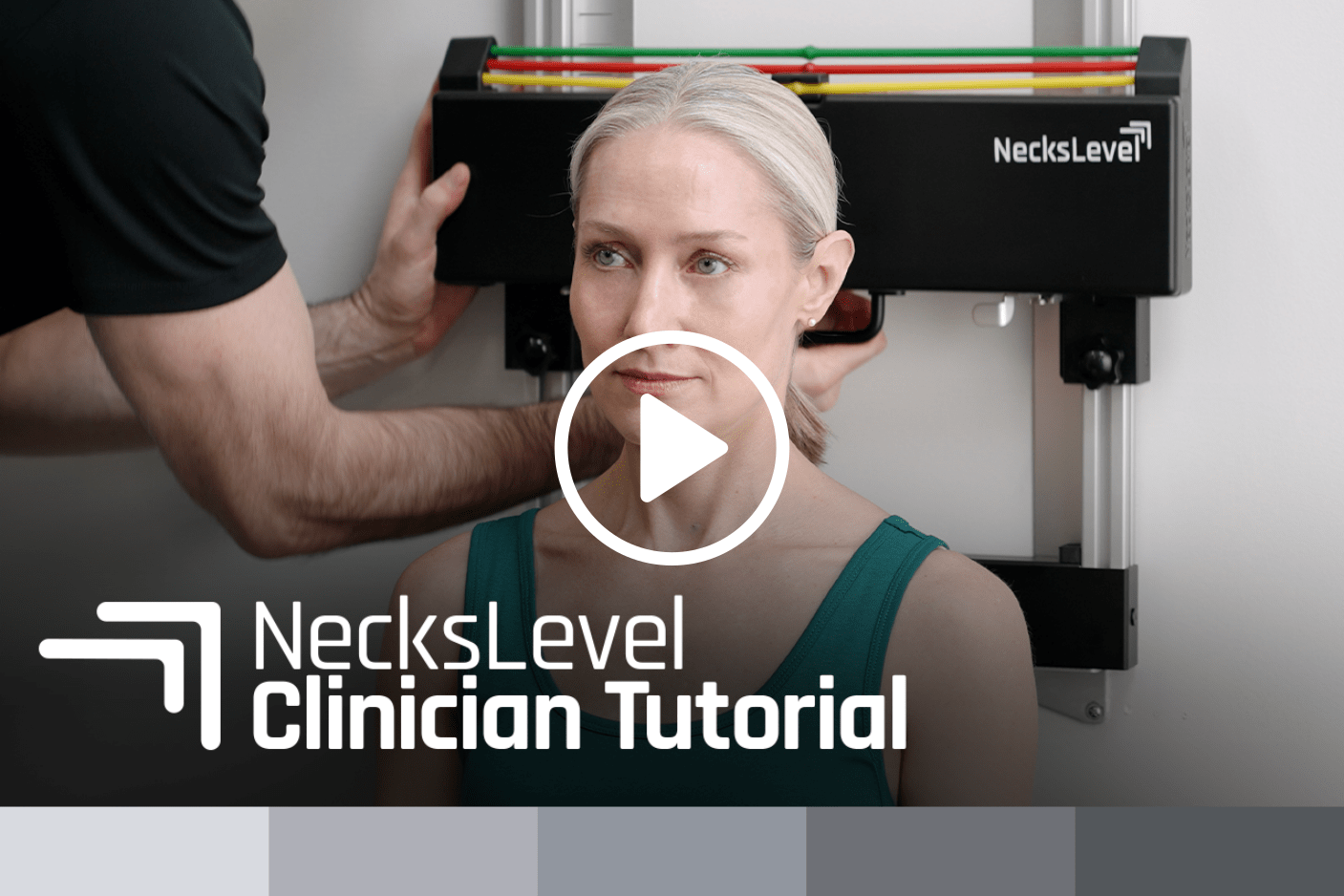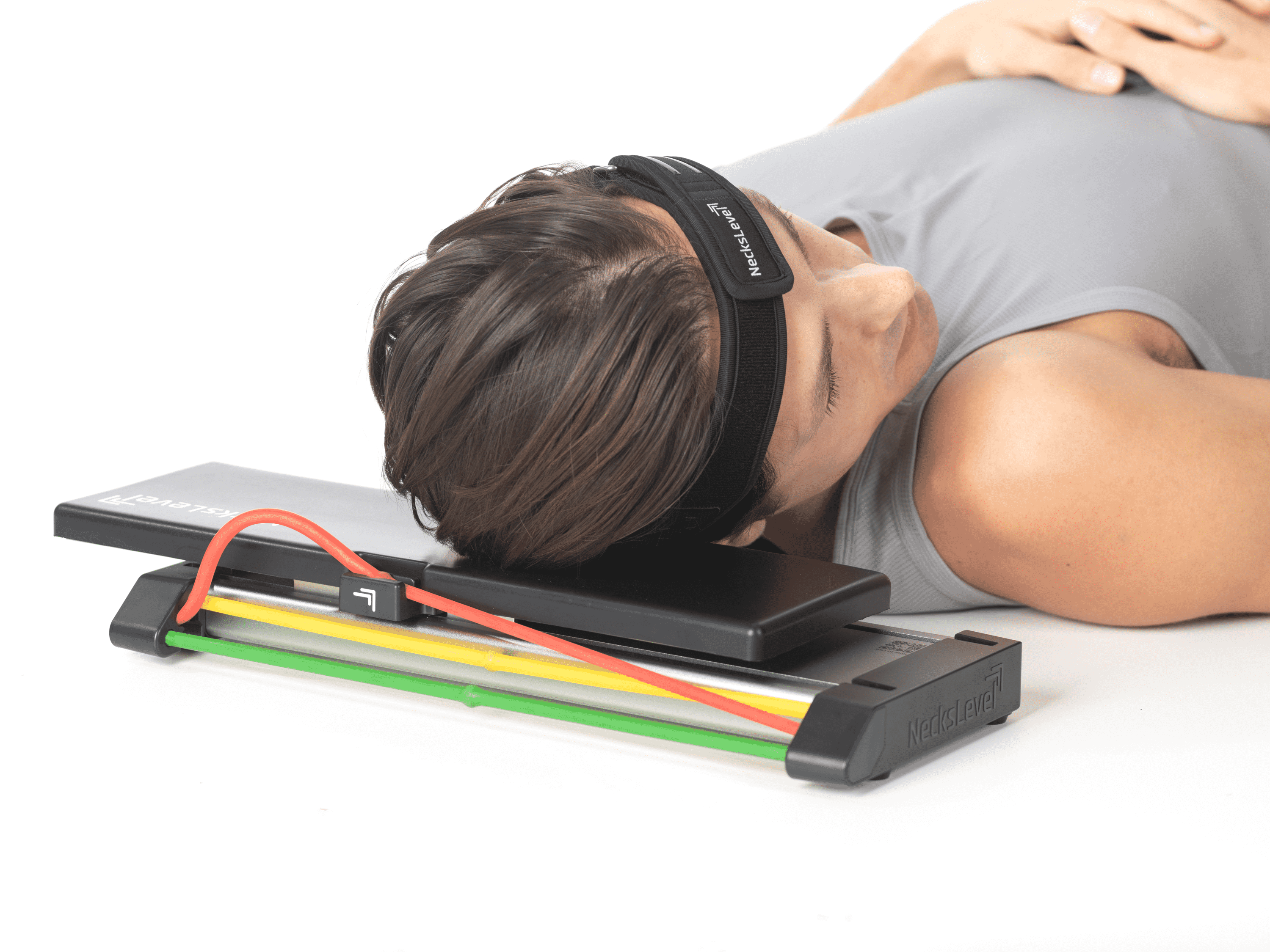Ultimate Guide to Neck Strengthening & The Best Neck Exercises
Whether you're an athlete looking to enhance performance, someone dealing with chronic neck pain, or simply aiming to improve your overall fitness, this comprehensive neck strengthening guide has you covered. We'll explore the importance of neck strength, the benefits of targeted exercises, and provide you with a variety of effective routines to help you achieve a stronger, healthier neck. Dive in and discover how to elevate your neck fitness.

Why Neck Strengthening Matters
Improved Athletic Performance
A strong neck is crucial for athletes in many sports, including football, wrestling, and combat sports. Enhanced neck strength can improve overall stability, reduce the risk of concussions, and enhance performance by allowing athletes to better withstand whiplash injuries. Athletes should strengthen the neck just like they strengthen any other region of the body.

Pain Prevention and Relief
Many people experience neck pain due to poor posture, prolonged sitting, or repetitive strain. Strengthening the neck muscles can alleviate existing pain and prevent future discomfort by supporting better posture and reducing strain on the cervical spine.

Enhanced Posture
In today's digital age, many of us spend hours hunched over screens, leading to poor posture and neck strain. Strong neck muscles contribute to better alignment and posture, which in turn reduces the likelihood of developing chronic neck and back issues.

Anatomy of the Neck Muscles

Understanding the key muscles involved in neck movements is essential for effective strengthening. The neck muscles can be broken down into 4 groups:
Neck Flexors:
The neck flexors are muscles responsible for the forward bending motion of the neck, allowing you to lower your chin towards your chest. The primary muscles involved in neck flexion include the sternocleidomastoid (SCM) and the deep neck flexors.
Neck Extensors:
The neck extensors are the muscles that enable you to tilt your head backward and look up. Key muscles in this group include the splenius capitis, splenius cervicis, semispinalis capitis, and semispinalis cervicis. These muscles work together to extend the cervical spine, supporting the head's weight and maintaining an upright posture.
Neck Rotators:
The neck rotators facilitate the rotation of the head, enabling you to turn your head from side to side. The main muscles involved in this action are the sternocleidomastoid (SCM), the splenius capitis/cervicis, and the obliquus capitis inferior. Strong neck rotators are essential for maintaining a full range of motion and ensuring that neck movements are smooth and controlled.
Neck Side Benders:
The neck side benders, or lateral flexors, are responsible for the side-to-side movement of the neck, allowing you to tilt your head toward your shoulders. The primary muscles involved in this movement are the anterior, middle, and posterior scalenes, as well as the sternocleidomastoid (SCM).
It's important to note that many of the neck muscles help with more than one motion. For example, the SCM does neck flexion, sidebend, and rotation.
Best Neck Strengthening Exercises without Equipment
To strengthen the neck muscles without any equipment, we will use the weight of your head (around 10 pounds) to provide resistance. These exercises are a great place to begin with neck strengthening, but they may become easy over time.
Neck Flexors
1. Chin Tucks
Chin tucks are a simple yet effective exercise to activate and strengthen the deep neck flexors, a muscle group found deep in the front of your neck.

How to Perform:
1. Lie on your back with your head resting.
2. Gently nod your head as if saying "yes," feeling the muscles at the front of your neck engage.
3. Hold the contraction for 5-10 seconds, then relax.
Perform 3 sets of 10 reps
Tip: When you tuck your chin, try to relax all of the neck rotator muscles and jaw muscles to help target the deep neck flexors.
2. Chin Tuck with Head Lift
Adding the head lift further strengthens the deep neck flexors and the other large flexor muscles like the SCM.

How to Perform:
1. Lie on your back with your head resting.
2. Gently nod your head as if saying "yes," feeling the muscles at the front of your neck engage.
3. While holding the chin tuck, lift your head in the air about 2 inches. Hold for 10 seconds.
4. Perform 2-3 sets of 10 reps
Tip: When you lift your head, focus on keeping the chin tucked to avoid suboccipital headaches.
Neck Extensors
3. Backwards Head Lift
This exercise will strengthen the extensor muscles on the back of your neck which help with posture and overall neck stability.

How to Perform:
1. Lie on your stomach and prop yourself up on your elbows
2. While holding a chin tuck, lift your head upwards so it is in line with your spine. Hold for 10 seconds.
3. Perform 2-3 sets of 10 reps
Neck Rotators
4. Head Lift with Turn
The neck rotator muscles surround you cervical spine and turn your head left and right. This exercise will head your neck rotator strength while improving your head turning motion.

How to Perform:
1. Lie on your stomach and prop yourself up on your elbows
2. While holding a chin tuck, lift your head upwards so it is in line with your spine, then slowly turn your head lift and right continuously.
3. Perform 2-3 sets of 10 reps (1 left & right turn is 1 rep)
Neck Sidebenders
5. Sideways Head Lift
The neck sidebenders run along the side of your neck and will be strengthened when lying on your side and holding your head in the air.

How to Perform:
1. Lie on your side
2. While holding the chin tuck, lift your head in the air so it is in line with your spine. Hold for 10 seconds.
3. Perform 2-3 sets of 10 reps on both your left & right side
Neck Strengthening with a Resistance Band
Resistance bands are portable, adjustable, and can be used anywhere, making them a convenient tool for anyone looking to incorporate neck strengthening into their fitness routine. By using resistance bands, you can perform a variety of exercises that target the neck flexors, extensors, side benders, and rotators.
Neck Flexors
1. Flexion

How to Perform:
1. Attach a resistance band to a secure object at head height. Put the resistance band around your head & face away from the anchor point.
2. Gently flex your head forward while holding a chin tuck. You will feel the muscles in the front of your neck engage.
3. Relax until your head is back in line with your body and repeat. Perform 2-3 sets of 10 reps.
Neck Extensors
2. Extension

How to Perform:
1. Attach a resistance band to a secure object below head height. Put the resistance band around your head & face the anchor point.
2. Stand tall with good posture and take a small step back to put tension in the resistance band. Then, release the hold and let your head move forward. Pull your head back again.
3. Perform 2-3 sets of 10 reps.
Neck Rotators
3. Rotation

How to Perform:
1. Attach a resistance band to a secure object at head height. Stand with your shoulders in line with the band & put the resistance band around your head.
2. Turn away from the resistance band through your full range of motion. Turn your head back to the center and repeat.
3. Perform 2-3 sets of 10 reps.
Neck Sidebenders
4. Lateral Flexion

How to Perform:
1. Attach a resistance band to a secure object at shoulder height. Stand with your shoulders in line with the band & put the resistance band around your head.
2. Tilt your head and neck toward your shoulder, then release and bring your head back to the center. Repeat.
3. Perform 2-3 sets of 10 reps.
Conclusion | Neck Strength Exercises
These 9 neck strengthening exercises are a great way to begin neck strengthening for injury prevention, neck rehabilitation, and sport performance.
Consistency is Key: Perform these exercises 3x/week to see significant improvements in neck strength and posture.
Start Slowly: Begin with shorter holds and fewer repetitions, gradually increasing as your muscles become stronger.
Focus on Form: Proper form is crucial to avoid strain and maximize the benefits of each exercise. Follow the pictures closely to ensure correct technique.
Note: If these exercises become too easy after a few weeks of training or are too awkward to perform, consider using specialized neck strengthening equipment.
Written by:

Dr. Scott Dickenson, DPT, ATC
Physical Therapist
Scott is an Orthopedic Physical Therapist specializing in neck pain with nearly a decade of clinical experience. He regularly speaks at national Physical Therapy, Athletic Training, & Chiropractic conferences on neck injuries & rehab in sport.
NecksLevel Glide
"Like having a Physical Therapist in your home"
Professional neck strengthening and stretching in one compact device. Relieve neck pain while reducing neck stiffness & improving your posture.
Shop Now

Related Resources:








